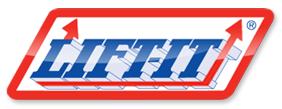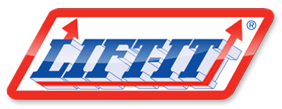|
ABRASION: The mechanical wearing of surfaces resulting from frictional contact between materials and/or objects.
ANGLE:
| Included |
Horizontal |
Vertical |
 |
 |
 |
ANGLE OF CHOKE: The angle formed in the sling body at the bite of a choker hitch.
Choker angles less than 120 degrees decrease sling capacity.
ANGLE OF LOADING: Inclination of a leg or sling branch as measured from the horizontal or vertical plane.
ARAMID: A group of lightweight, strong, heat resistant, synthetic, aromatic polyamide materials that are formed into fibers, filaments or sheets for use in textiles, plastics or slings.
BEARING PRESSURE: The compressive stress developed at the contact surfaces between two objects when they are attached together and then loaded.
BREAKING STRENGTH: The total force (lbs. or kgs.) at which the sling fails. The total weight strain which can be applied before failure, also known as Ultimate Load.
BUNCHING: Squeezing a synthetic sling into a narrow hardware or connection point.
COEFFICIENT OF FRICTION: Reluctance of two objects to slip or slide.
COMPETENT PERSON: A person who is capable of identifying existing and predictable hazards and has the authority to take prompt, corrective measures to eliminate the hazard(s).
CREEP: Non-recoverable stretch.
DESIGN FACTOR: The ratio of breaking strength to Work Load Limit for new items, generally expressed as a ratio, i.e., 5 to 1 or 7 to 1.
DESIGNATED PERSON: A person who is selected or assigned by the employer or employer’s representative as being competent to perform certain duties.
DECELERATION STRESS: Additional Stress imposed on rigging resulting from the decrease in load velocity.
DYNAMIC LOADING: Loading introduced into rigging or equipment by forces of motion.
ELASTIC LIMIT: Stress above which a permanent deformation occurs within a given material.
ELONGATION: The measurement of stretch, at a given load, expressed as a percentage of the original, unloaded length.
FITTING: A load bearing metal component which is attached to the sling.
HIGH PERFORMANCE FIBER (HPF): Synthetic fiber that has grams per denier of 15 or more. K-Spec®, Technora®, Spectra® and Dyneema®are examples of HPF and are generally two to three times as strong as nylon or polyester fibers.
LENGTH: The distance between the extreme bearing points of the sling, including fittings, if applicable.
LOAD: The total weight or force to be overcome by the hoisting or rigging equipment.
LOAD ANGLE FACTOR (LAF): The multiplier derived by dividing Leg Length (L) by Headroom (H) used to multiply the share of a specific sling, branch or component to determine the actual tension applied during lifting.
PROOF TEST: A non-destructive test of the sling to a multiple of the Work Load Limit. The multiple of test is usually twice the Work Load, not exceeding 40% of the break strength.
QUALIFIED PERSON: A person, who, by possession of a recognized degree or certificate of professional standing in an applicable field, or who by, extensive knowledge, training and experience has demonstrated the ability to solve or resolve problems relating to the subject matter and work.
SELVAGE EDGE: The finished edge of synthetic webbing which prevents raveling.
SHARE OF THE LOAD (SOL): The portion of the total weight of a load that a particular component is responsible to carry, generally expressed in percentages.
SHOCK LOAD: Any condition of rapid lift, sudden shifting or the arrest of a falling load. Shock Loads are significantly greater than Static Loads.
SIDE LOADING: A load applied at an angle to the vertical plane of a crane boom or the lifting axis of rigging hardware.
SLING SERVICE: Normal: service that involves use of loads within the rated load. Severe: service that involves normal service coupled with abnormal operating conditions. Special: service other than Normal or Severe, which is approved by a qualified person.
SYNTHETIC FIBER: Materials produced and used for the cover, core, webbing and thread in synthetic sling products.
THREAD: The synthetic yarn which is used to sew the slings, sling covers and tags.
ULTIMATE STRENGTH: The maximum stress, tensile, compressive or shear that a material can stand without failure.
WORK LOAD LIMIT: The maximum recommended load that should be exerted on the item.
The following terms are also used for the term Work Load limit: “Work Load”, “Working Load”, “Rated Load” and “Rated Capacity”.
All Work Load Limit values, unless noted otherwise, are for in-line pull with respect to the center line of the item, with no shock load.
Some glossary terms provided as a courtesy by RiggSafe Solutions, founded by Mr. Mike Riggs, a friend and true gentleman.
|




